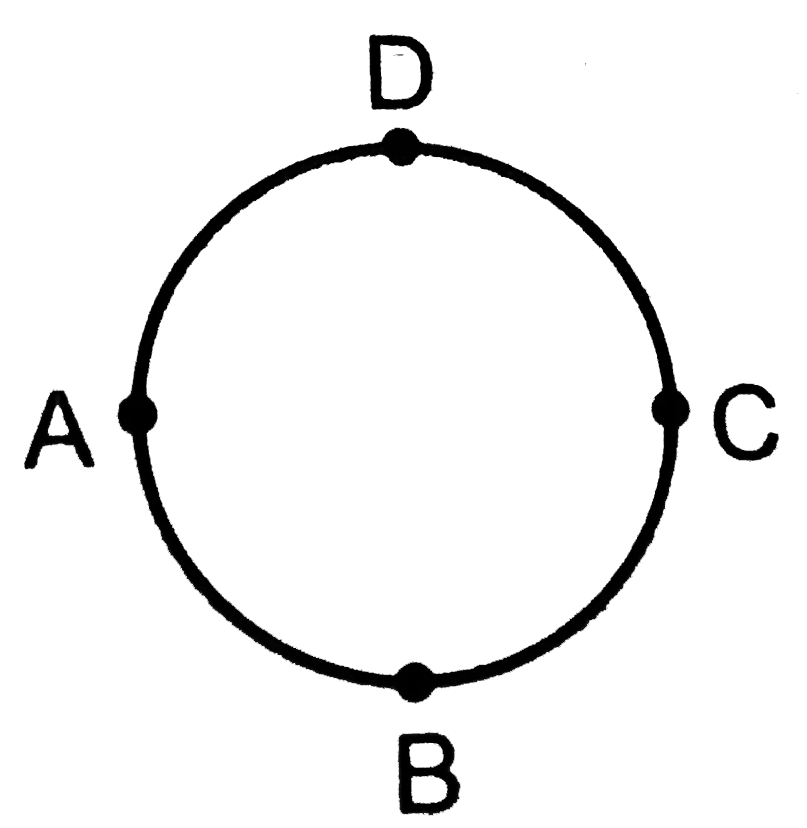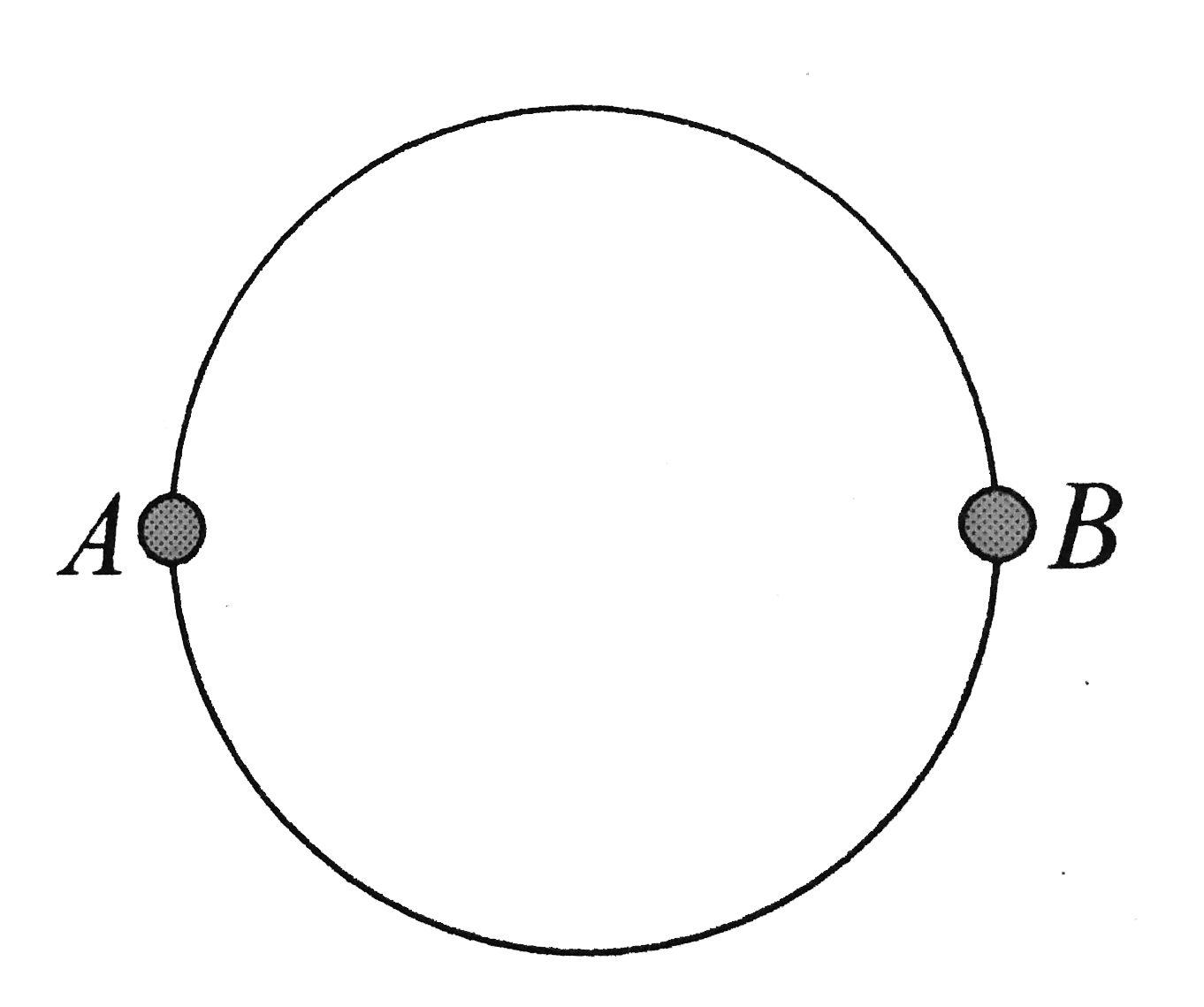When a wire of uniform cross-section a, length I and resistance R is bent into a complete circle, resistance between two of diametrically opposite points will be
R4
R8
(4R)
R2
The correct Answer is:A
To find the resistance between two diametrically opposite points on a wire of uniform cross-section that has been bent into a complete circle, we can follow these steps:
Step 1: Understand the initial conditions
We have a wire of length L, cross-sectional area A, and resistance R. The resistance R of the wire is given by the formula:
R=ρLA
where ρ is the resistivity of the material.
Step 2: Determine the circumference of the circle
When the wire is bent into a complete circle, the length of the wire becomes the circumference of the circle:
C=2πr
where r is the radius of the circle.
Step 3: Relate the length of the wire to the radius
Since the wire was originally of length L, we have:
L=2πr
From this, we can express the radius r:
r=L2π
Step 4: Determine the resistance of each semicircle
When the wire is bent into a circle, it can be divided into two semicircular sections. Each semicircular section has a length of:
Length of each semicircle=L2
The resistance of each semicircular section can be calculated using the resistance formula:
Rsemicircle=ρL2A=R2
Thus, each semicircle has a resistance of R2.
Step 5: Calculate the equivalent resistance between two diametrically opposite points
The two semicircles are in parallel when considering the resistance between points A and B (the diametrically opposite points). The equivalent resistance RAB can be calculated using the formula for resistors in parallel:
1RAB=1Rsemicircle+1Rsemicircle
Substituting Rsemicircle=R2:
1RAB=1R2+1R2=2R+2R=4R
Thus,
RAB=R4
Final Answer
The resistance between two diametrically opposite points is:
RAB=R4
We have a wire of length L, cross-sectional area A, and resistance R. The resistance R of the wire is given by the formula:
R=ρLA
where ρ is the resistivity of the material.
When the wire is bent into a complete circle, the length of the wire becomes the circumference of the circle:
C=2πr
where r is the radius of the circle.
Since the wire was originally of length L, we have:
L=2πr
From this, we can express the radius r:
r=L2π
When the wire is bent into a circle, it can be divided into two semicircular sections. Each semicircular section has a length of:
Length of each semicircle=L2
The resistance of each semicircular section can be calculated using the resistance formula:
Rsemicircle=ρL2A=R2
Thus, each semicircle has a resistance of R2.
The two semicircles are in parallel when considering the resistance between points A and B (the diametrically opposite points). The equivalent resistance RAB can be calculated using the formula for resistors in parallel:
1RAB=1Rsemicircle+1Rsemicircle
Substituting Rsemicircle=R2:
1RAB=1R2+1R2=2R+2R=4R
Thus,
RAB=R4
The resistance between two diametrically opposite points is:
RAB=R4
Topper's Solved these Questions
- BOOK - A2ZCHAPTER - CURRENT ELECTRICITYEXERCISE - Section - C1videos
CURRENT ELECTRICITY
- BOOK - A2ZCHAPTER - CURRENT ELECTRICITYEXERCISE - AIIMS Questions36videos
CURRENT ELECTRICITY
- BOOK - A2ZCHAPTER - CURRENT ELECTRICITYEXERCISE - Section B - Assertion Reasoning28videos
CURRENT ELECTRICITY
- BOOK - A2ZCHAPTER - ATOMIC PHYSICSEXERCISE - Section D - Chapter End Test30videos
ATOMIC PHYSICS
- BOOK - A2ZCHAPTER - DUAL NATURE OF RADIATION AND MATTEREXERCISE - Section D - Chapter End Test30videos
DUAL NATURE OF RADIATION AND MATTER
Similar Questions
Knowledge Check
- Question 1 - Select One
When a wire of uniform cross-section a, length l and resistance R is bent into a complete circle, resistance between any two of diametrically opposite points will be
AR4BR8C4RDR2 - Question 2 - Select One
When a wire of uniform cross-section A, length 1 and resistance R is bent into a complete circle, resistance between two diametrically opposite points will be
AR4BR8C4RDR2 - Question 3 - Select One
A wire of resistance 10(Ω)is bent to form a complete circle.Find its resistance between two diametrically opposite points.
 A1.5B2.5C3.5D4.5
A1.5B2.5C3.5D4.5
A metallic wire of resistance 12Ω is bent to form a square. The resistance between two diagonal points would be
View SolutionA metallic wire of resistance 12Ω is bent of form a square. The resistance between two diagonal points would be
View SolutionA wire of resistance 12Ωm−1 is bent to from a complete circle of radius 10cm. The resistance between its two diametrically opposite points, A and B as shown in the figure, is
 View Solution
View SolutionA uniform wire of resistance 2R is bent in the form of a circle. The effective resistance between the ends of any diameter of the circle is
View SolutionA conducting wire of uniform cross section, having resistance R is bent to form a circle. O is the centre of this circle. Two points P and Q are selected on the ring in such a manner that ∠POQ is θ. If a battery of emf E and negligible internal resistance is connected between P and Q, then the current drawn from the battery would be
View Solution

